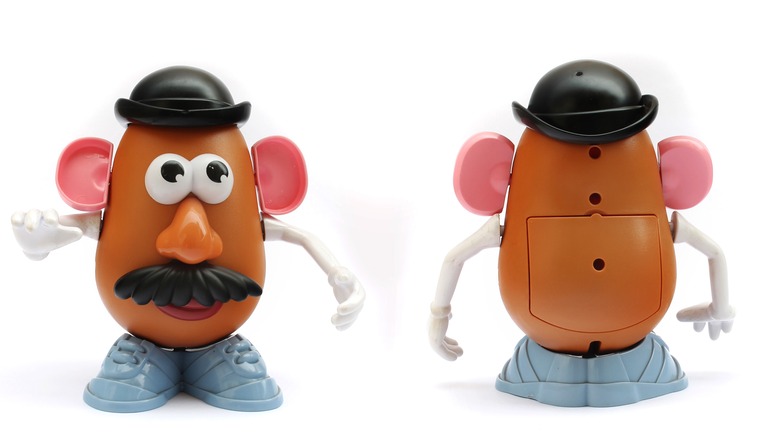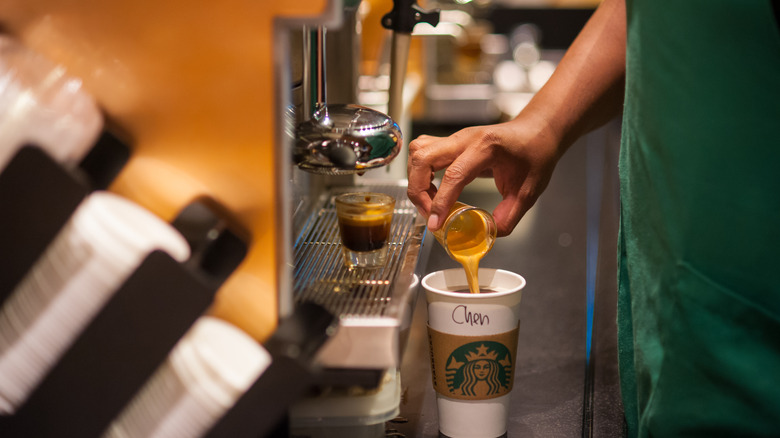How Mr. Potato Head Helped Starbucks Make Drinks Faster
Mr. Potato Head may have had his comeback moment when Pixar's "Toy Story" franchise incorporated this classic toy into their storyline back in 1995, but the toy is still relevant today — and it even has some practical uses.
According to ThoughtCo., an inventor by the name of George Lerner came up with the idea for this toy about 73 years ago. The concept was similar to what it is today. Kids could create what their potato toy looked like, making a mash-up of a mess or an organized face.
However, despite the love this Hasbro Playskool toy gets today, Mr. Potato Head was not an instant success and instead found itself as a prize in a cereal box before it was ever packaged up for toy stores. Fast forward to the present day, and this toy has received some cultural makeovers, allowing kids to turn this spud into an Optimash Prime, Tony Starch, Luke Frywalker, or Darth Tater. But Mr. Potato Head is so much more than a kid's toy. The Wall Street Journal reports Mr. Potato Head helped Starbucks to make their coffee and espresso drinks faster. Here's how it happened.
When you're good can you get better?
According to a 2009 Wall Street Journal article, Starbucks once used Mr. Potato Head to teach franchises a lesson in efficiency. The company began implementing lean methodology at an Oregon City Starbucks shop that already had one of the fastest drive-through windows in the country. The manager at the time confessed that since her shop was averaging 25 seconds per order, she didn't think they could be any quicker. That's when a member from Starbucks corporate turned to Mr. Potato Head for a hands-on demonstration for improvement.
The lean team member placed Mr. Potato Head's body parts on different tables and then performed a timed test of the manager's ability to put the toy together. The WSJ reports it initially took over 60 seconds for the manager to put the toy together; however, after two hours, the employee was able to shave off almost 45 seconds and complete the goal in just 16 seconds. She was able to do this simply by moving things "closer together" and changing the order in which she performed the steps. The exercise aimed to help managers and employees organize stores more efficiently and shave off the time it would take to make a drink. It worked, and the Oregon City store reduced its order time to 23 seconds. Of course, it's 2022, and Starbucks isn't resting on its laurels. Per PYMNTS, Starbucks is currently putting its elbow grease into creating greater "efficiency of digital order fulfillment."

